Round Edges with Textures
-
Could you attach the skp file, too? (And if you have, the Thea mat.pack file as well - rename it to zip to be able to attach)
-
-
-
Very tedious to match up the stone with all the mesh.
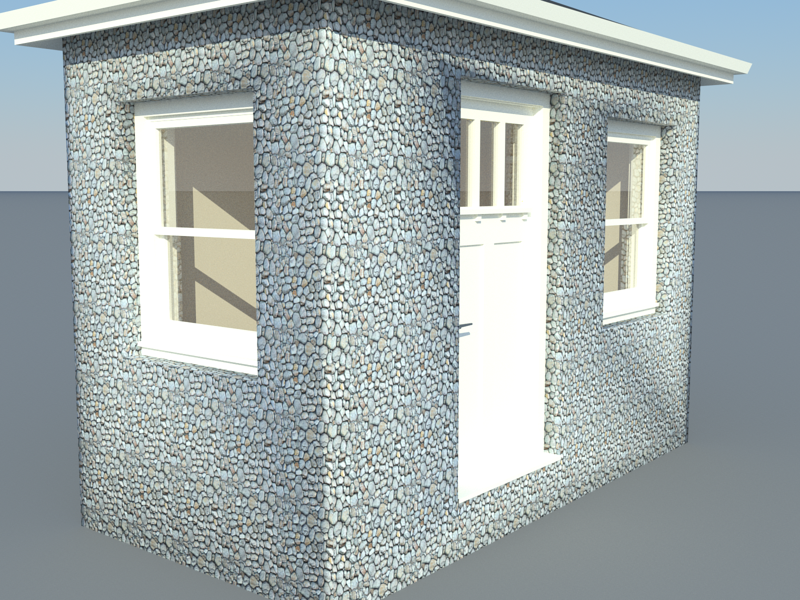
-
Larger scale stone for better view of corners
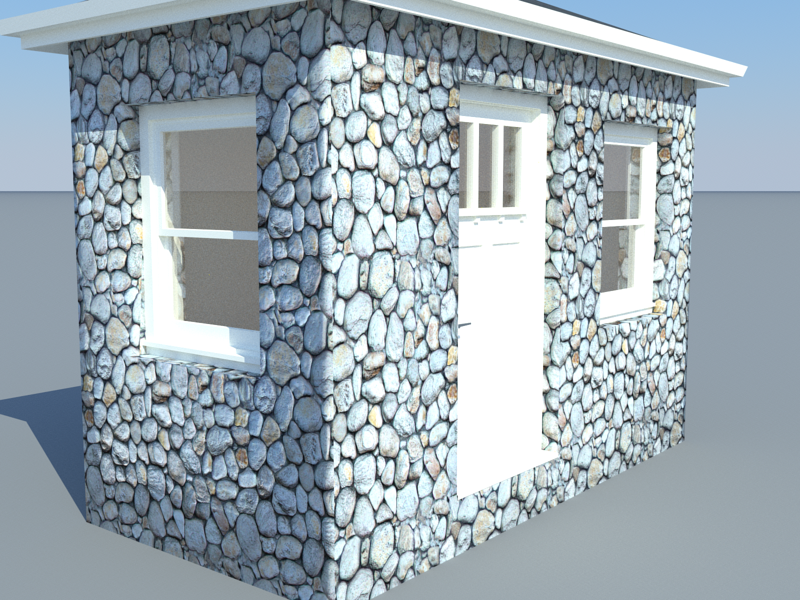
-
If you just 'chamfer' the corner and apply the materials, then use the eyedropper to sample one face's material and if needed then my Texture Tools to adjust the horizontal spacing of any abutting face's texture by a few mm at a time [shift=x10] - you get quickly get this...
The pattern matching will run out at a corner somewhere unless you tweak horizontal scaling carefully to match -
The round edge plugg in is good.
The window looks good, except look at the right side of the door. I dont know how to fix.
Help please.
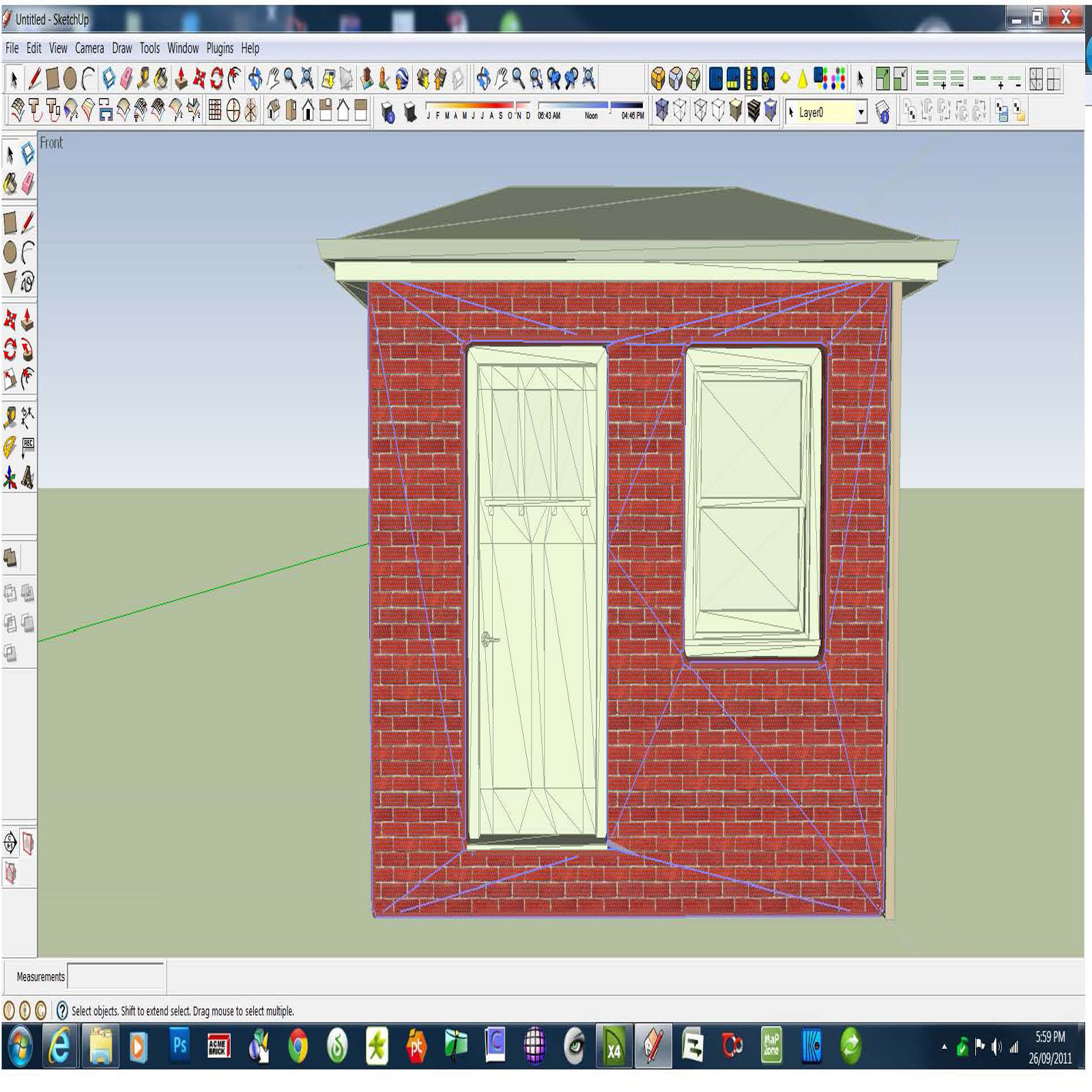
-
Another view
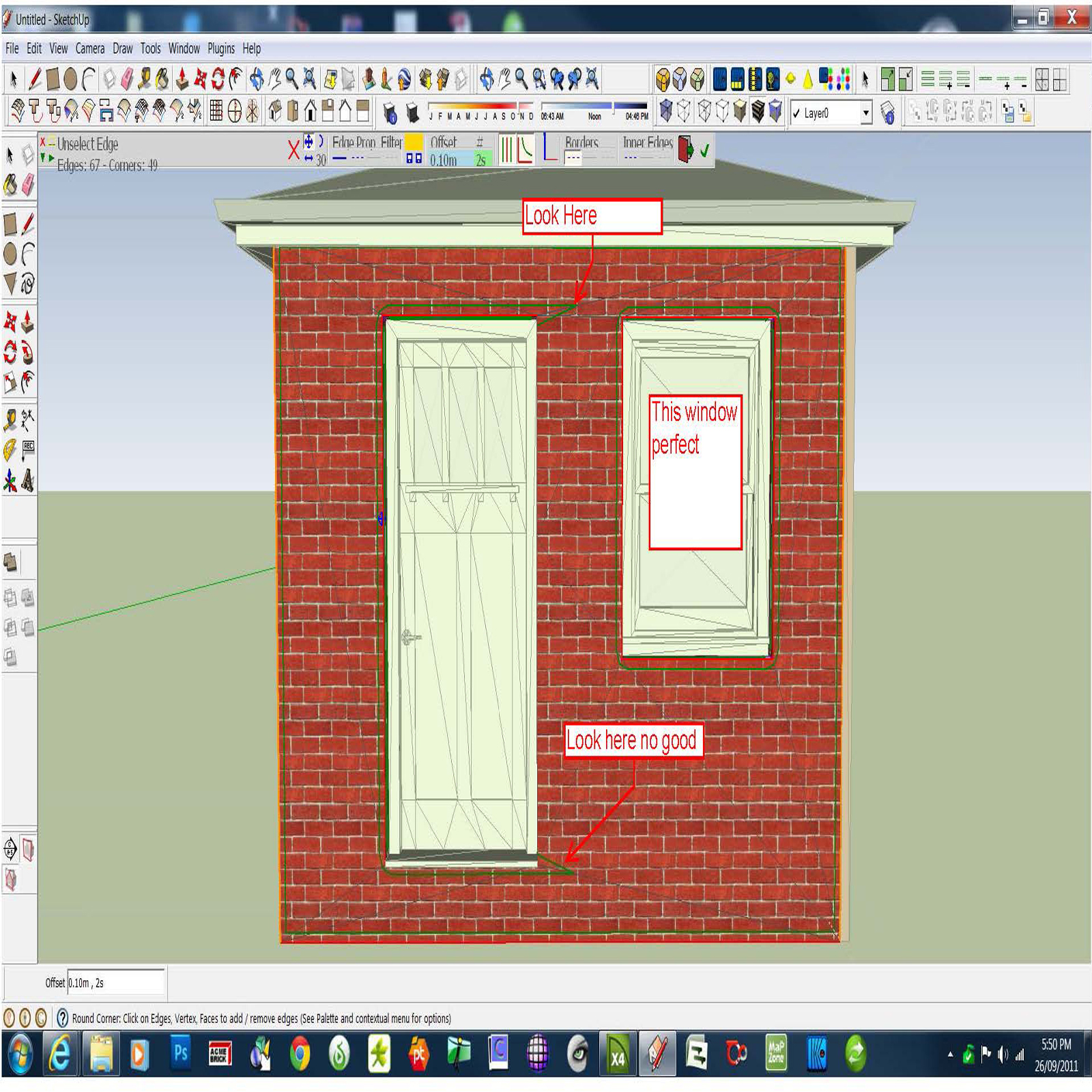
-
There are serious problems with your model. Here are a bunch of things:
-
all faces are triangulated. In SketchUp, this leads to unnecessarily large poly count, texturing as well as problems with plugins like Round corners.
-
You have a layered wall with who knows how many layers inside (I am not talking about SketchUp layers but architectural layers). I know the model is coming from Chief Architect and represents the real building things but for simple visualization (where these inner faces cannot be seen) they are just extra stuff to deal with. "Only model what you will see" - this is visualization, not building documentation.
-
Your wall pieces are individual components (again, from CA) and they should be exploded so that the material can be seamlessly wrapped around (and vertices welded in Thea). Same with your roof pieces. This is one of the reasons CA models are hard to work with in Thea, too.
Basically what you should do is too. -
delete all inner layers (like insulation and all),
-
explode your wall pieces
-
and run these two plugins after each other
http://forums.sketchucation.com/viewtopic.php?t=28087
http://forums.sketchucation.com/viewtopic.php?t=22920
(note that this second one needs an additional plugin library). This is the result after I first ran it:
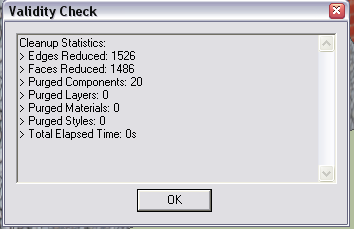
- although first I would also get rid of the stone and brick materials, too since at some places, the walls are painted with both - depending on triangulation)
Imported stuff is often quite hard to work with before you really clean up what may be useful in other apps but useless in SU - also the export/import process may add a bunch of things that need to be cleaned first.
-
-
Thanks Gaieus,
I will do what you suggested. Sounds good, i will post results
Thanks ever so much.
-
Here is also the model (I am sure there would still be place to reduce unnecessary complexity). Notice the difference in file size, too (almost half).
There is an inevitable problem however; unless your texture fits exactly around the model (or divided equally around the model), there will always be one edge where it does not fit seamlessly. Always put this edge (now find it behind) to where you will not examine the building - or break the completely continuous texture with some architectural element.
Edit: I also got your thea pack file but could not open or import it for some reason.
-
Hi Gaieus,
I like how the mesh gets cleaned up, though now when I do round corners to the brick opening around the door ie three edges and hit to round the whole face turns white. I don't understand why this occurs. Any suggestions what I'm doing wrong.
-
Don't forget that this plugin creates new edges - and when coplanar edges that form a closed loop are created in SU, a face is also created. Just click on it to select and press delete (if I understand the problem clearly)
-
Perfect Gaieus.
All good.
Thanks ever so much for your help.
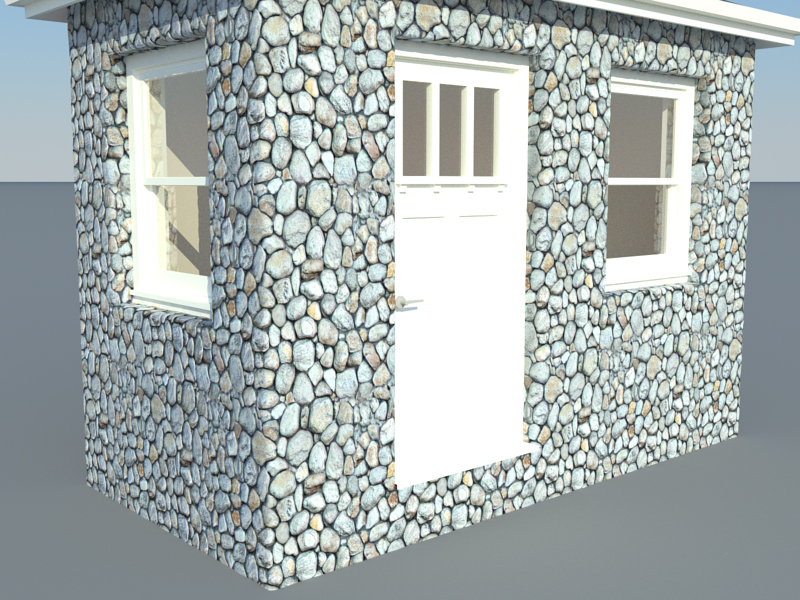
-
Perfect!

Now find something better stone texture for that house as I have not seen any similar flagstone cover since I visited some duke's manor somewhere near Chichester in Southern England a couple of years ago (or do they still build these in England?)

-
In East Anglia and the South East of the UK the vernacular style is called 'knapped-flint walling', there's usually a red clay-brick surround, or sometimes dressed stone trims... Flint cobbles are common in these mainly chalk-rock areas of the country, and it was a cheap and very durable building material, but now clay-brick is much cheaper and far less labor intensive because the flint cobbles have to be graded in size and they are often 'knapped' - i.e. effectively broken in half [but yours are 'unknapped'] ! It is still sometimes used for new building within conservation areas etc...
Here's a few examples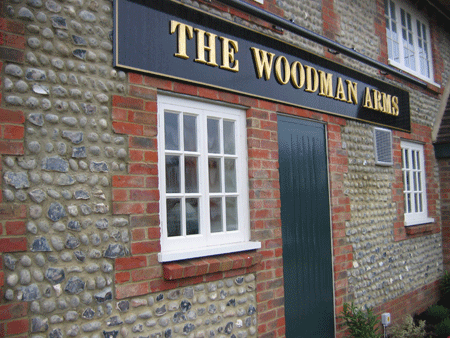
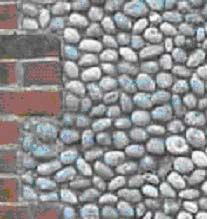
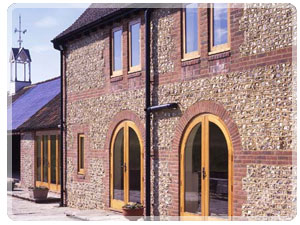
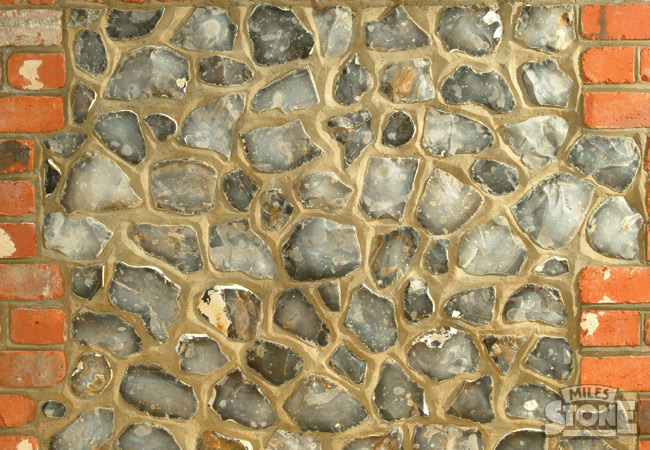
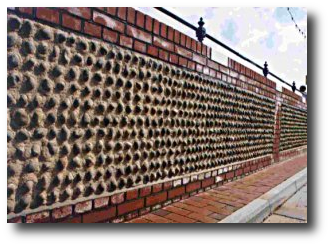
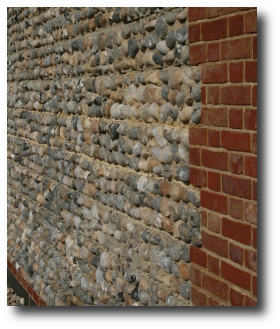
-
Thanks guys for your replies and here is one with a better stone texture i hope you like it.
I like how now if i change the texture in Thea all the stone looks good. So the setup from Su must be very good because the stone still lines up.
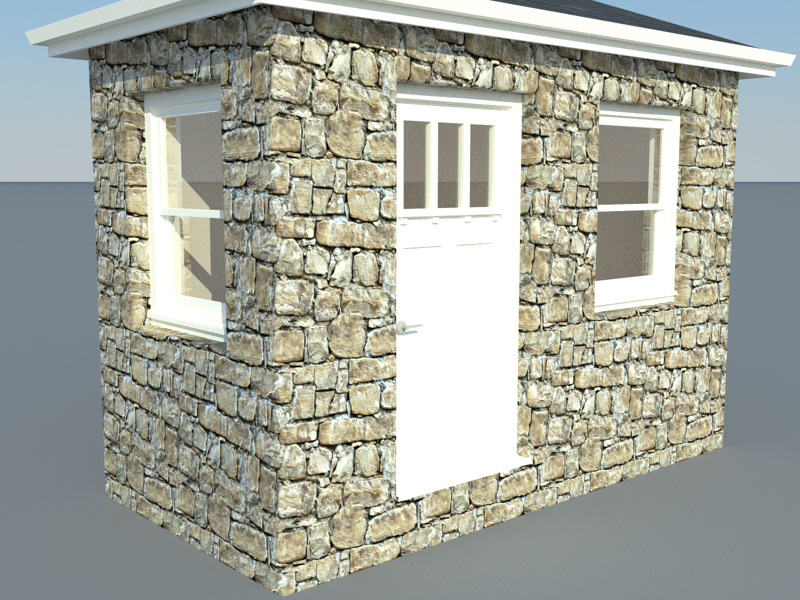
-
Look at some real stone buildings, compared to simple brickwork they will often have special 'quoin' stones to make wall corners and long stone sills and lintels at opening, and even special stone trims to opening reveals. These 'dressed-stone' items are often used in conjunction with the larger areas of less accurately made stonework
-
LoL, Tig,
Please, i have struggled for over one week to get this far.
Though i must say i like your idea.
I will deffinately try your suggestion next.
Thanks for your insite. -
@TIG: yes, it was also called flint, not flag. Sorry... And indeed they were similar to your examples.
@George: It only takes once to fight your way through these things. Once you understand the idea and the process to get there from your application, it is no longer that hopeless.
And yes; one very important lesson learned: once you have the proper UV data on each facet, you can easily swap the texture in either SU or Thea (or in fact, any other application which understands this data).
And what TIG says about corners: indeed (especially when the walls are quite big), these are often "strengthened" with bigges pieces (although they may also be used as a mere decoration). Here are some 16th century, Turkish mosques from my area and you can see the same (even though the "average" stone material is quite regular and made of bigger pieces):
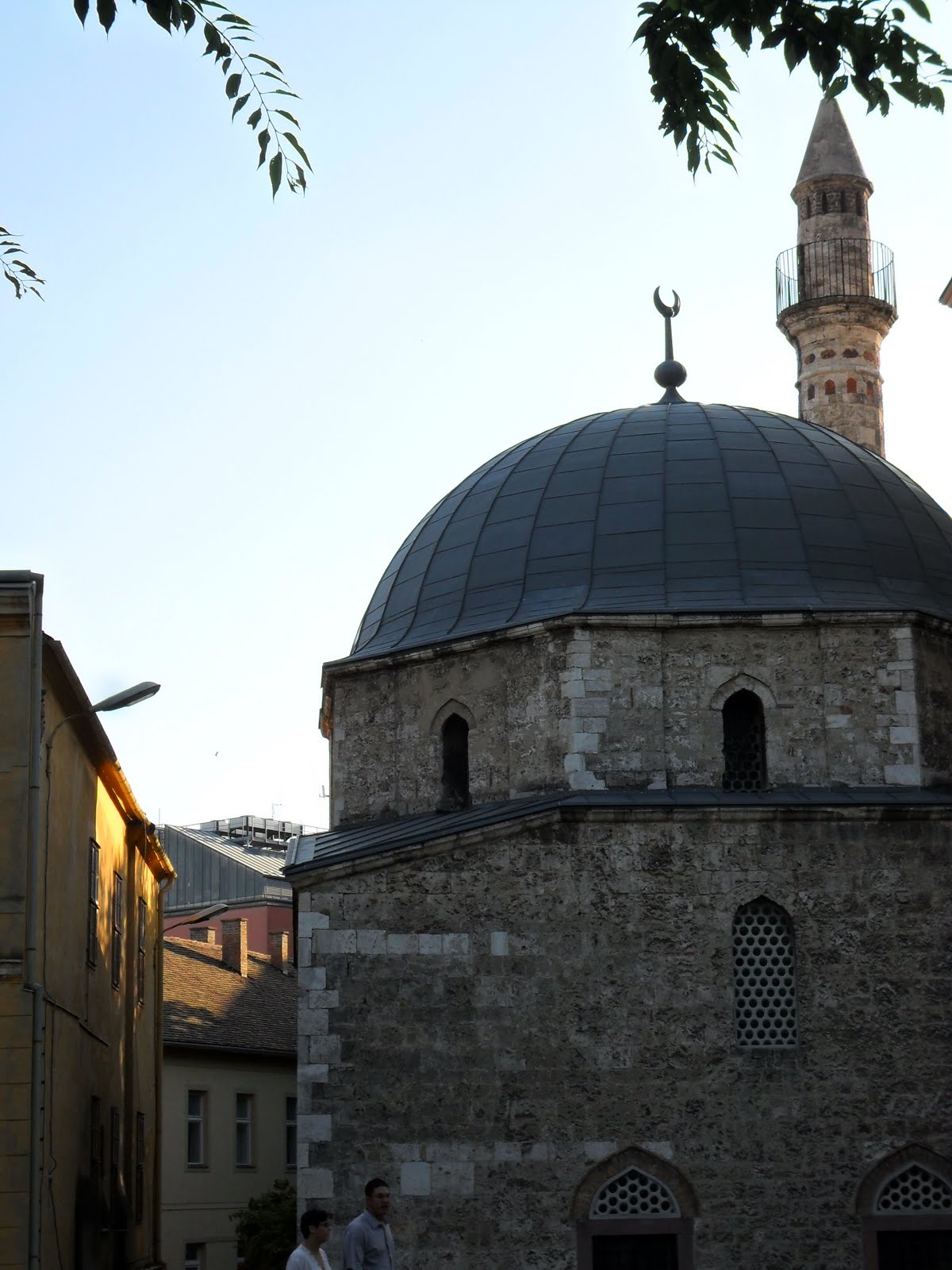
You can have these pre-made "corner materials" and just simply wrap them around corners and you need not worry about the rest any more.
Advertisement







